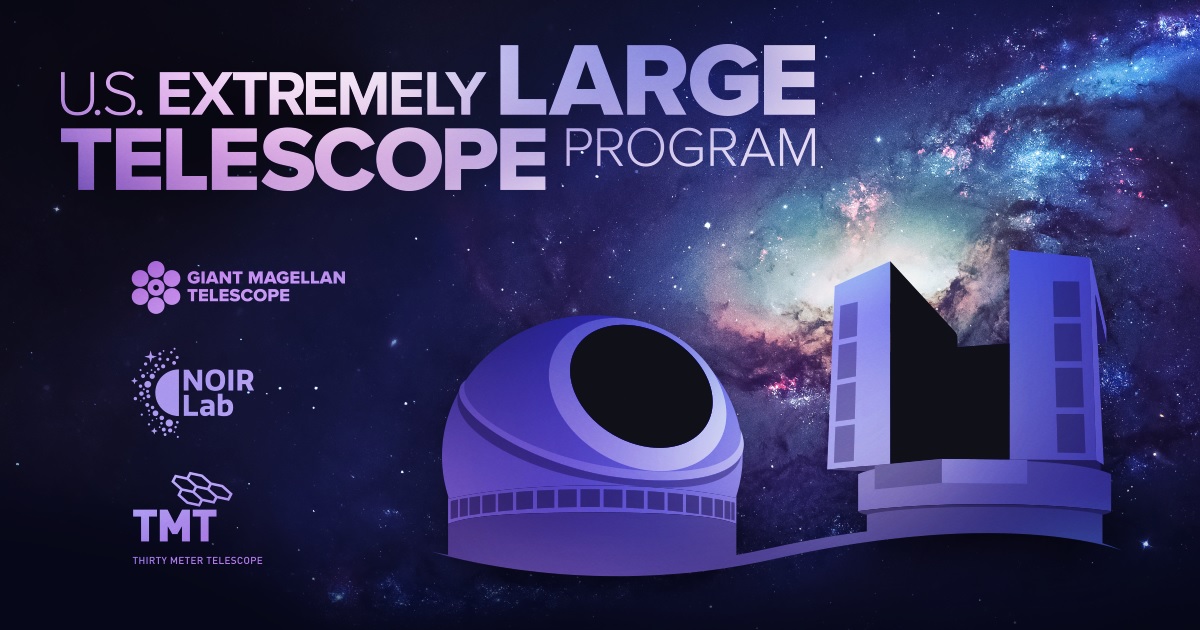Washington, DC—The National Academies of Science, Engineering, and Medicine Thursday ranked the U.S. Extremely Large Telescope program as a top strategic priority, recommending federal support for the final construction stages of the Giant Magellan Telescope, which is being built at Carnegie’s Las Campanas Observatory in Chile.
The Academies’ highly anticipated report, Pathways to Discovery in Astronomy and Astrophysics for the 2020s, was the result of its survey of the astronomy and astrophysics community regarding strategic goals and initiatives for the next 10 years. The recommendation detailed that building an extremely large telescope “is absolutely essential if the United States is to maintain a position as a leader in ground-based astronomy.”
“This is excellent news for U.S. competitiveness,” said Carnegie President Eric D. Isaacs, who is also Chair of the GMT Founder Representatives. “The National Academies’ recommendations will enable generations of scientists to remain at the forefront of discovery in astronomy and astrophysics and to advance our understanding of the universe and our place in it. We are proud to have played such a foundational role in the development of the GMT and that it is under construction at our Las Campanas Observatory in Chile.”
The idea for the GMT was born nearly two decades ago at the Carnegie Observatories and the institution has played a crucial role in the project’s development since it originated. As a founding partner, Carnegie has helped pave the way for the GMT Organization’s successful expansion and Carnegie researchers have made major contributions to the telescope’s technical and scientific capabilities.
 “We are incredibly honored to be ranked as a top priority in the decadal survey and are grateful for the many scientists who engaged in the process,” said Robert Shelton, president of the GMT Organization in an official statement. “This endorsement solidifies the scientific momentum that our founding consortium of international universities and research institutions pioneered years ago. After all, we designed the Giant Magellan Telescope to discover the unknown, and it’s the unimaginable discoveries that could change humanity forever.”
“We are incredibly honored to be ranked as a top priority in the decadal survey and are grateful for the many scientists who engaged in the process,” said Robert Shelton, president of the GMT Organization in an official statement. “This endorsement solidifies the scientific momentum that our founding consortium of international universities and research institutions pioneered years ago. After all, we designed the Giant Magellan Telescope to discover the unknown, and it’s the unimaginable discoveries that could change humanity forever.”
In the Academies’ survey, the GMT was evaluated as a core partner of the U.S. ELT program, which was viewed as a visionary program that will enable collaborative, inclusive, and transformational research in nearly all areas of astrophysics—from understanding the fundamental nature of the universe to the search for life on distant exoplanets. The initiative’s goal is for the NSF’s NOIRLab to provide U.S.-based astronomers with full sky observing access to the GMT in the Southern Hemisphere and the Thirty Meter Telescope in the Northern Hemisphere.
“We are proud to be part of the U.S. Extremely Large Telescope Program and its bold vision to provide full-sky access to the astronomical community,” said Walter Massey, Board Chair of the GMT Organization and former director of the National Science Foundation. “A heartfelt congratulations to both the Thirty Meter Telescope and NOIRLab. This strong recommendation is the result of many years of hard work. It is a great time to support and join our inspirational project and help secure access to these amazing telescopes for decades to come.”
Construction of the 24.5-meter aperture GMT is well underway at Carnegie’s Las Campanas Observatory at the southern edge of Chile’s Atacama Desert—one of the best locations on Earth to explore the heavens. The project has completed hard rock excavation for the foundation and support infrastructure, cast six of seven primary mirrors, begun fabricating its first adaptive secondary mirror, and has already secured NSF funding to accelerate the prototyping and testing of some of the most powerful optical and infrared technologies ever engineered.
From the efforts of Carnegie astronomer and GMT Chief Scientist Rebecca Bernstein to the participation of Observatories and Earth and Planets Laboratory scientists in various planning and review phases of the GMT and U.S. ELT program, Carnegie’s involvement has been foundational to the initiative’s success.
“Astronomers across our institution, now and for generations to come, stand to benefit from this momentous decision,” said Carnegie Science Deputy and Observatories Director John Mulchaey, who is also on the GMT Organization’s board. “Advancing this program will enable a second century of Carnegie leadership in astronomy.”
For more than 100 years, Carnegie has played a leading role in the design and construction of large optical telescopes and of instruments that enhance their capabilities. This tradition has enabled Carnegie astronomers and engineers to stay at the vanguard of discovery and will continue with the completion and launch of the GMT and the success of the U.S. ELT program.

